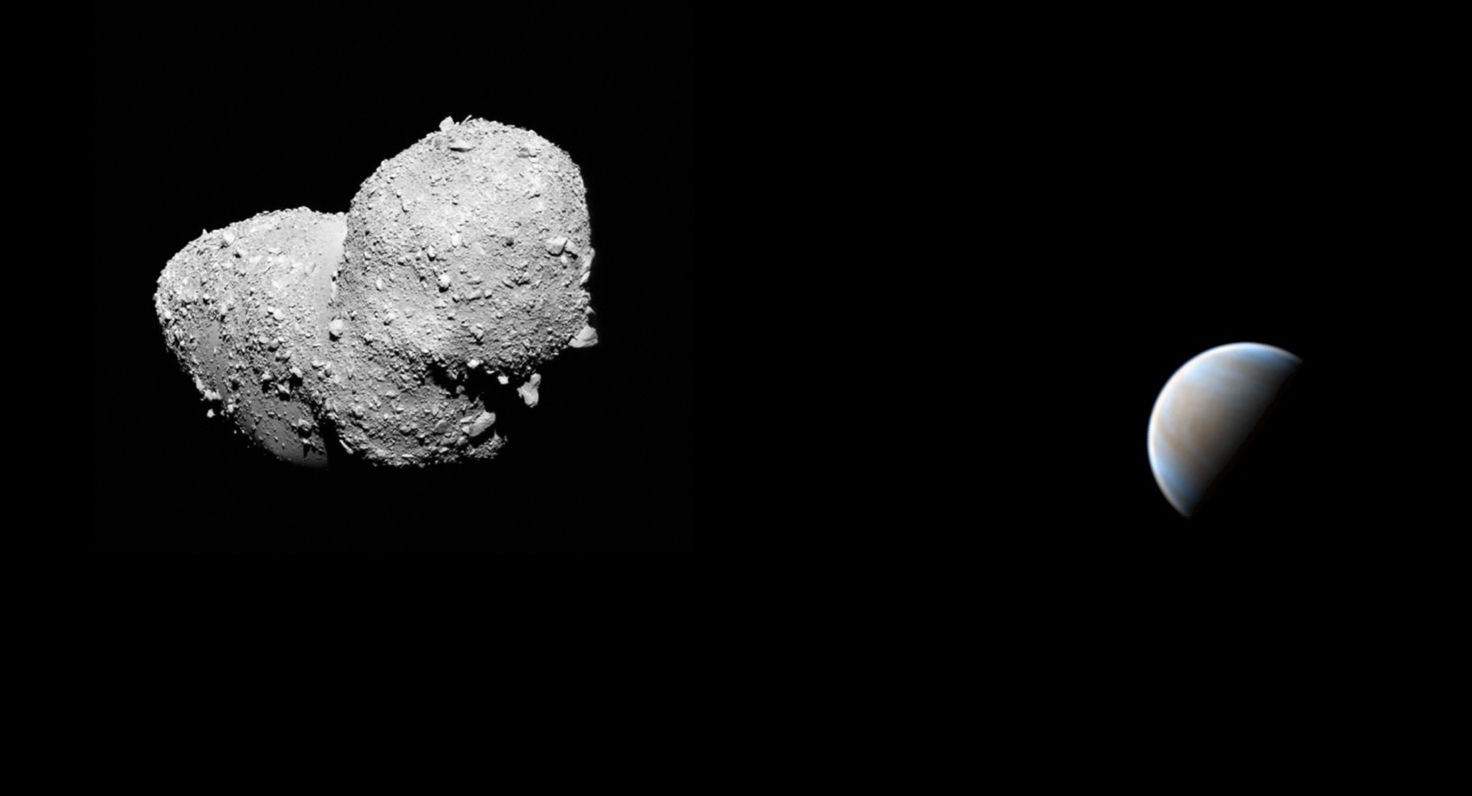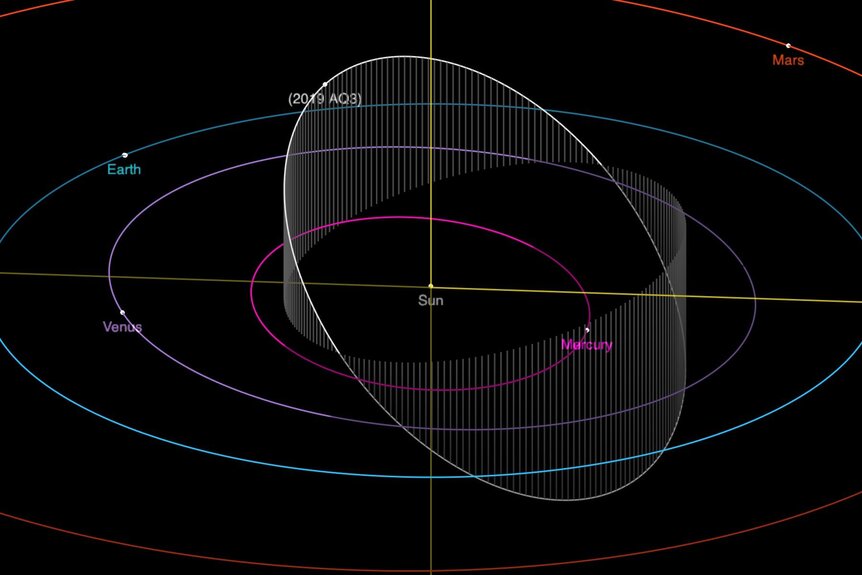Create a free profile to get unlimited access to exclusive videos, sweepstakes, and more!
A new telescope spots a very rare near-Venus asteroid

A new telescope system in California that only switched on less than a year ago has already made a slew of interesting discoveries. One of them is of particular interest to me: a near-Venus asteroid!
You’ve probably heard of near-Earth asteroids, which get relatively close to Earth (if they are above a certain size and get close enough, they are categorized as Potentially Hazardous Asteroids). Well, this is the same idea, but this asteroid gets very close to Venus. Even more interesting, its orbit is really peculiar, making it one of a very rare class of asteroids that always remain inside Earth’s orbit around the Sun.
The asteroid, called 2019 AQ3, was found by the Zwicky Transient Facility (or ZTF), a state-of-the-art camera mounted on the 123-centimeter Samuel Oschin Telescope at the Palomar Observatory in southern California. The camera is designed to survey the sky, measuring the brightnesses and positions of millions of objects, looking for ones that change. This could include things that get brighter or dimmer (like variable stars, supernovae, and so on) and things that move, like asteroids, comets, and distant icy Kuiper Belt Objects that orbit the Sun beyond Neptune.
Nothing about the ZTF is small. It has six 6k x 6k detectors on it, making it a staggering 227 megapixel camera. It can see an area of the sky 240 times the size of the full Moon in a single image, and can cover the entire northern hemisphere of the sky in just three nights. Since it began operation in March 2018 it has already measured over a billion objects — a billion — and in a single night can make over 100,000 observations of 25,000 asteroids. Wow.
I know I’ll be writing a lot more about ZTF in the future, so let’s focus in on this weird asteroid. 2019 AQ3 was first seen in images taken by ZTF on January 4, 2019, and happily it was also detected (though no one noticed at the time) in images taken by the Hawaiian Pan-STARRS telescope as far back as October 2015. That allowed the orbit to be nailed down with pretty good accuracy — the longer you can track an asteroid the better the orbit can be calculated.
What they found is pretty weird, to say the least. First, the orbit is pretty elliptical, which in itself isn’t odd, but the size of the orbit is so small it’s always closer to the Sun than Earth! Its orbit stretches from 61 million out to 116 million km from the Sun. That means it can get closer to the Sun than Mercury, and just farther out than Venus. Its year (the time it takes to go around the Sun) is just 165 days, giving it the shortest period known for any asteroid.
This is extremely rare; out of the roughly 800,000 known asteroids, only 20 — yes, twenty — have orbits like this. As a class they have the informal designation of Interior-Earth Objects, which is a bit confusing (they aren’t actually inside the Earth). They’re also informally called Apohele asteroids, which is clever. That’s the Hawaiian word for “orbit”, for one, and it also brings to mind the word aphelion (the point in an object’s orbit when it’s farthest from the Sun), so it’s a bit of a pun.
However, asteroid classes are generally named after the first one found in that class, and in this case that’s 163693 Atira, so Atira class it is.
AQ3’s orbit is highly tilted to the plane of Earth’s orbit, tipped by about 47°. That’s pretty odd, and keeps it from getting any closer to us than about 35 million km. It can get far closer to Venus, and in fact in March 2031 it’ll pass about 6 million km from Venus. We don’t know exactly how big AQ3 is, but using its brightness as a guide, it’s likely about 2 km in diameter. Decent-sized as asteroids go.
As a class, Atiras are curious. How did they get there? Did they form there, or did they form out in the main asteroid belt between Mars and Jupiter (much farther out from the Sun, hundreds of million of kilometers farther) and somehow get dropped into these much smaller orbits?
And even more interesting: How many of them are there?
That last bit is hard to know. It turns out these kinds of asteroids are really hard to find, because from Earth we never see them get very far from the Sun! Venus, for example, is always within about 45° of the Sun due to its smaller orbit, so we can only see it in dark skies for short periods of time just after sunset or before sunrise… and even then when it’s in the right part of its orbit for the geometry to be favorable. Most of the time it’s much closer and therefore lost in the Sun’s glare.
The same is true for Atiras. Their proximity to the overwhelmingly bright Sun makes them hard to spot, which is why so few are known. There could be many, many more. In general with objects like this the biggest and brightest are found first, so AQ3 may be among the easiest to spot… but there could be thousands more waiting to be found.
There’s also a class of asteroids called vulcanoids, which orbit entirely inside the orbit of Mercury. They’re theoretical; not a single one has actually been found. No one knows if they exist or not, because they’re even harder to spot since they’re even closer to the Sun than asteroids like AQ3. There have been attempts, but we’ve only been able to get an upper limit to how big one might be (if one were bigger than a certain size it would be brighter and found by now). That’s frustrating, since this is a big chunk of real estate in the solar system that’s essentially unexplored. Finding more rocks like AQ3 could give us insight into these even hotter Sun-huddling asteroids. If they exist.
Unfortunately ZTF doesn’t look in the part of the sky that close to the Sun, so it’s not able to spot vulcanoids, but I’m hoping it’ll see more Atiras in general.
And it’ll spot lots of other very interesting asteroids, too. After a year it’s already discovered hundreds of new ones, including 50 near-Earth asteroids, and even one Potentially Hazardous Asteroid: 2018 CL, which is probably at least 250 meters across and can get within 7.5 million km of our fair blue planet.
I love it when a new facility like this comes on line, especially when, after such a short period, it’s already produced so many discoveries. Finding an extremely rare Atira asteroid is a fantastic bit of icing, but there’s still a whole lot of cake to eat, too.



























